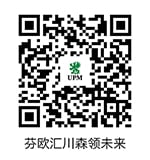Over the past few years, the phrase “war on waste” has been popping up frequently in Chinese media headlines. Last year, China’s state news agency Xinhua described tackling the waste problem as “a tough and drawn out battle.” The campaign began in March 2017, when the Chinese central government set out a waste sorting plan with the goal of recycling 35% of municipal solid waste in 46 of the country’s major cities by 2020.
Shanghai and Beijing, the two largest cities, have since amended the municipal rules to enforce mandatory waste classification – in July 2019 and May 2020, respectively. In January this year, a state commission announced another ambitious goal: to eliminate all non-biodegradable plastic bags across the country by 2025.
Drowning in rubbish
The Chinese government has many valid reasons to make such dramatic moves, and many would argue that these measures have come rather late. Although China has been drowning in rubbish for decades, the country still lacks a nationwide recycling regime and depends heavily on private scavengers to collect recyclable waste from public rubbish bins and people’s homes.
Before the authorities started banning imports of solid waste in 2018, China was a scrapyard accommodating half of the world’s rubbish. In addition to the vast imports of waste, China also churns out overwhelming amounts of waste itself. Driven by skyrocketing growth in consumption and rapid urbanisation over the past 30 years, China, home to one-fifth of the global population, produces the most plastic waste in the world.
Although many countries have a higher per capita rate of plastic waste generation than China, its lack of waste incineration plants and a proper recycling system has led to overwhelmed landfills and heavy pollution.
The Jiangcungou Landfill, the largest landfill in China at a size of 100 football fields, was designed to operate for half of a century but met its capacity after only 25 years. Considering that it takes up to 1,000 years for single-use plastics to degrade in a landfill or the environment, the scale of pollution is unquestionably massive.
A sense of responsibility
While some remain doubtful about how effective the new measures are and whether the Chinese government will be able to hit its seemingly far-fetched target, promising progress has been seen in Shanghai, the first city in China to roll out compulsory waste sorting.
In 2019, the government of Shanghai introduced a separate collection scheme dividing household rubbish into four categories: recyclable, hazardous, perishable and dry waste. Statistics released by the local authorities in July show that one year after the launch of the new rule, the waste sorting rate has increased from 15% to over 90%.
According to Jue Wang, senior environmental specialist at UPM and a Shanghai resident, the establishment of a clear waste collection routine, the numerous volunteers in every community providing guidance, and the wide distribution of public recycling bins in the city are the keys to the new programme’s success.
